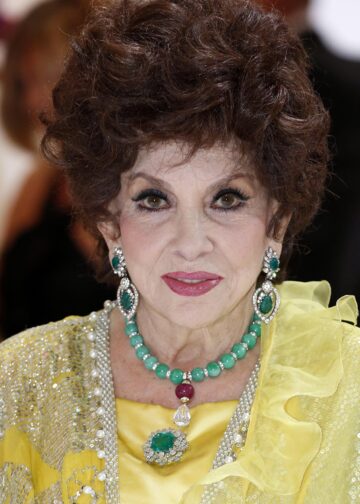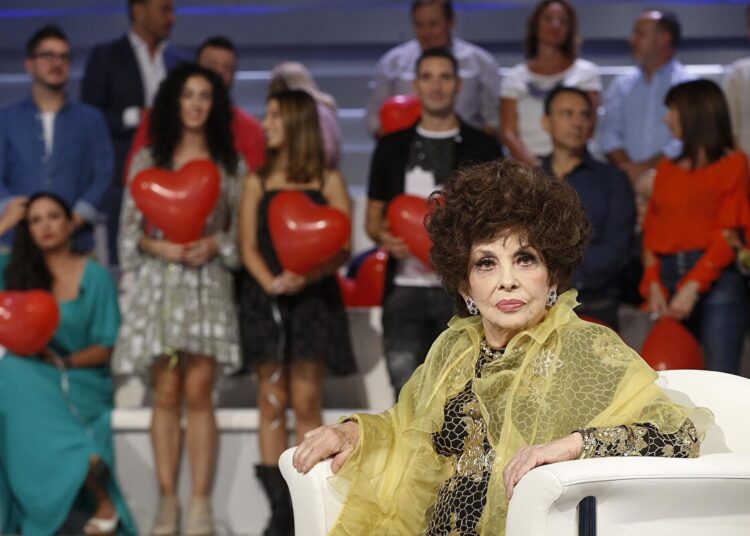Italian actress Gina Lollobrigida, one of the biggest stars of European cinema in the 1950s and ’60s, has died at the age of 95.
Culture minister Gennaro Sangiuliano wrote on Twitter: “Farewell to a diva of the silver screen, protagonist of more than half a century of Italian cinema history. Her charm will remain eternal.”
Often described as “the most beautiful woman in the world”, her films included Beat the Devil, the Hunchback of Notre Dame and Crossed Swords. She co-starred alongside the likes of Humphrey Bogart, Frank Sinatra, Rock Hudson and Errol Flynn. When her career faded in the 1960s she moved into photography and politics.

Nicknamed Lo Lollo, she was one of the last surviving icons of the glory days of film, who Bogart said “made Marilyn Monroe look like Shirley Temple”. Movie mogul Howard Hughes showered her with marriage proposals. Off camera, she enjoyed a feud with fellow Italian star Sophia Loren.
She died in a Rome clinic, her former lawyer Giulia Citani told the Reuters news agency.
Luigina Lollobrigida was born on 4 July, 1927. The daughter of a furniture manufacturer, Gina spent her teenage years avoiding wartime bombing raids before studying sculpture at Rome’s Academy of Fine Arts.
A talent scout offered her an audition at Cinecitta – then the largest film studio in Europe and Italy’s thriving “Hollywood on the Tiber”. Howard Hughes, infatuated with the Italian star, lured Lollobrigida to Hollywood and inundated her with proposals of marriage
In 1960, she moved to Canada – for lower taxes and a promise of legal status for her Yugoslav husband. One magazine gushed that it was “the most fetching argument ever advanced for liberal immigration policies”.
In the 1960’s she engaged in a feud with Sophia Loren. Egged on by her husband – the film producer Carlo Ponti – Loren had claimed she was “bustier” than Lollobrigida. Gina hit back, saying Sophia could play peasants but never ladies. “We are as different as a fine racehorse and a goat,” she said.
Lollobrigida has been known to make provocative statements about women and sex: “A woman at 20 is like ice,” she declared. “At 30 she is warm. At 40 she is hot. We are going up as men are going down.” Among her many admirers was Prince Rainier of Monaco, who, according to Gina, “would make passes at me in front of [his wife, Grace Kelly] in their home.” she claimed.
Her last major film – alongside David Niven in “King, Queen, Knave” – came in 1972. There were tantrums on set and the production was halted three times for mysterious “eye problems”.
Lollobrigida took a few parts in American TV series – including Falcon’s Crest and Love Boat – but then reinvented herself as an artist.

In her second career as a sculptor and photojournalist, she achieved great success. She scooped the world with a rare photoshoot and interview with Cuban leader Fidel Castro. “We spent 12 days together,” she said. “He didn’t interest me as a political leader but as a man. He realized that I hadn’t gone there to attack him and he readily accepted me.”
Her tendency to gravitate to younger men proved to be disastrous on more than one occasion. When she fell in love with Javier Rigau y Rafols, a charming Spaniard who was 34 years younger, they announced their engagement in 2006. They soon called it off, due to frenzied press attention and widespread mockery of the star.
Rigau, however, went ahead with the wedding – allegedly using an imposter to play Lollobrigida. According to her account, she only discovered her marriage by chance when she found documents on the internet. She took legal action; Rigau produced witnesses. He insisted Lollobrigida had agreed to marry him by proxy using a power of attorney she had once granted. She lost the ensuing court case, but the marriage was annulled in 2019 with the blessing of the Pope.
Lollobrigida fought another legal action against her son Milko, who had asked for control of his mother’s business dealings. Now in her 80s, the action was thought to have been prompted by her new relationship with a handsome man in his 20s.
Gina Lollobrigida lived to an age at which memories of her glory days – as part of movie world royalty in the ’50s and ’60s – have grown dim. Few of her films are now regarded as classics.












